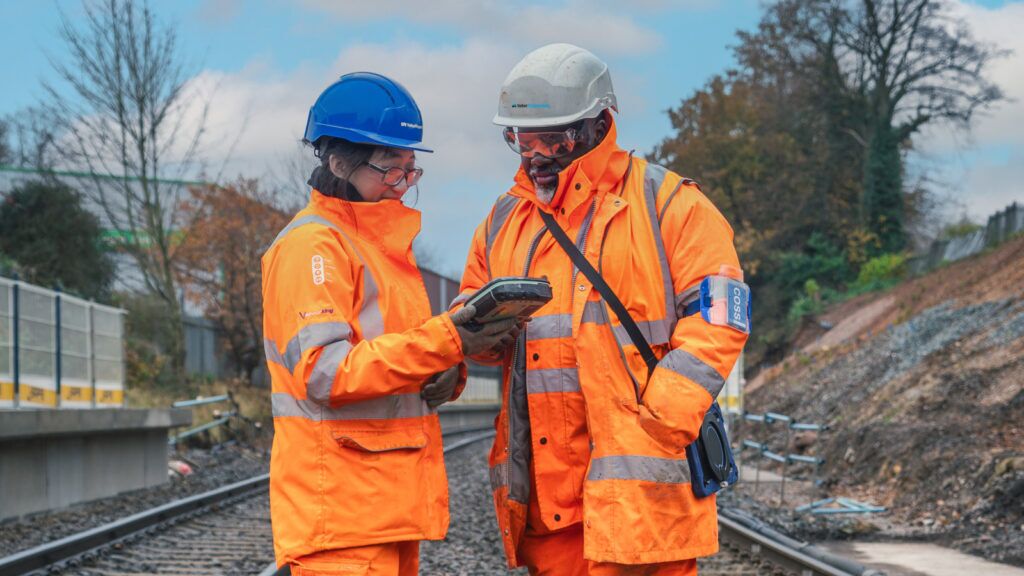In the UK construction industry, the tier system loosely categorises contractors by turnover, project scale and market presence, much like the British Navy’s historic ship ratings. However, unlike naval classifications, there’s no strict definition – tiers are informal groupings that vary by region and context. This guide clarifies the distinctions and shows how our ecowelfare units support sustainable welfare across all tiers, from global giants to local builders. For a broader industry overview, check our Top 100 Construction Companies in the UK 2025.
Tier 1 Construction Companies: Industry Giants
Definition: Tier 1 construction companies are the UK’s largest contractors, with annual turnovers exceeding £500 million, often reaching billions. These publicly traded or international firms operate nationwide and globally, working directly with clients (e.g., government, corporations) on megaprojects like HS2, airports and hospitals.
Characteristics:
- Scale: Employ thousands, with offices across multiple regions.
- Projects: Large-scale infrastructure (e.g., nuclear facilities, motorways, skyscrapers).
- Margins: Low margins, high turnover, focused on growth.
- Examples: Balfour Beatty (£8.59bn turnover), Kier Group (£3.48bn), Morgan Sindall (£2.97bn), Mace Group (£2bn), Laing O’Rourke (£1.8bn).
Tier 1 firms prioritise sustainability to meet government mandates (e.g., net-zero targets). Our solar-powered welfare units, used by RSK Environment Ltd, saved 3 tonnes of CO2 and 970 litres of fuel, aligning with Tier 1’s large-scale sustainability goals.
Tier 2 Construction Companies: Specialised Players
Definition: Tier 2 construction companies are medium-sized contractors with turnovers of £100-£499 million. Often private or family-owned, they focus on niche sectors (e.g., apartments, hospitals) and compete on expertise rather than scale.
Characteristics:
- Scale: Regional or national presence, smaller than Tier 1.
- Projects: Mid-sized projects like schools, commercial building or specialised infrastructure.
- Margins: Higher margins than Tier 1, with a focus on quality.
- Examples: Ardmore Group, Robertson Group, Tilbury Douglas, McLaughlin & Harvey, Bouygues UK.
Tier 2 firms balance cost and sustainability. ecowelfare units, as used by Marlin Contract Services, saved 183 litres of fuel and half a tonne of CO2, offering cost-effective welfare for mid-sized sites.
Tier 3 Construction Companies: Local Heroes
Definition: Tier 3 construction companies are small to medium-sized contractors with turnovers of £10-£100 million. They dominate in numbers, focusing on local or regional projects like one-off houses, small schools or apartment blocks.
Characteristics:
- Scale: Local or regional, with smaller teams.
- Projects: Small-scale residential, commercial or public works.
- Margins: Variable, often project-dependent.
- Examples: Stainforth Construction, Claritas Group, Wynne Construction, J Tomlinson, Osborne.
Tier 3 firms need affordable, flexible welfare. Our compact 12ft ecowelfare units, used by Archaeology Wales, saved 180 litres of fuel and half a tonne of CO2, ideal for smaller, remote sites.
Tier 4 Construction Companies: Small-Scale Experts
Definition: Tier 4 (a proposed term) includes micro-contractors and tradespersons with turnovers under £10 million, often sole traders or small teams building extensions, refurbishments or single homes.
Characteristics:
- Scale: Hyper-local, often one-person or small crews.
- Projects: Extensions, renovations, small residential builds.
- Margins: High variability, project-to-project focus.
- Examples: J Dunne Construction, Synnott Construction, Chestnut Contractors, Maypole Construction.
Tier 4 contractors benefit from portable, low-cost welfare. euroloo 12ft towable ecowelfare cabins, as used by Circular Renewables, provide zero-fuel sanitation and canteens, perfect for small budgets.
ecowelfare Solutions for All Tiers
All euroloo ecowelfare units are solar-powered, sustainable welfare solutions tailored to the needs of Tier 1, Tier 2, Tier 3 and Tier 4 contractors. Key benefits include:
- Zero Fuel Costs: 100% solar-powered, saving 65-970 litres of fuel per project (e.g., RSK Environment Ltd).
- CO2 Savings: Avoid 200kg-3 tonnes of CO2 emissions, supporting net-zero goals (e.g., Circular Renewables).
- Worker Wellbeing: Modern canteens, flushing toilets and drying rooms boost morale and efficiency (e.g., Marlin Contract Services).
- Flexibility: Units range from 12ft (small sites) to 24ft (large teams), suitable for all tiers.
Pros and Cons of Working with Each Tier
Tier 1 Builders
Pros: Job security, competitive salaries, robust HR policies, large-scale projects.
Cons: Limited project variety, slower career progression, risk of corporate instability (e.g., Carillion’s collapse).
ecowelfare Advantage: Supports Tier 1’s sustainability mandates with scalable, zero-emission units.
Tier 2 Builders
Pros: Specialised expertise, diverse project roles, family-like culture in some firms.
Cons: Less formal HR, potential for inconsistent work culture, smaller budgets.
ecowelfare Advantage: Cost-effective units fit mid-sized budgets while meeting green targets.
Tier 3 Builders
Pros: Hands-on experience, local focus, flexible roles.
Cons: Variable benefits, limited HR support, project-dependent stability.
Ecowelfare Advantage: Compact units provide affordable welfare for small sites.
Tier 4 Builders
Pros: High autonomy, local reputation, diverse tasks.
Cons: Minimal benefits, inconsistent income, small-scale challenges.
ecowelfare Advantage: Smaller towable units suit micro-contractors’ tight budgets and remote sites.
FAQs
What are Tier 1 construction companies in the UK?
Tier 1 companies are the largest contractors, with turnovers over £500 million, working on megaprojects like HS2 (e.g., Balfour Beatty, Kier Group).
How do Tier 2 and Tier 3 builders differ?
Tier 2 builders (£100-£499 million turnover) focus on niche sectors (e.g., Ardmore Group), while Tier 3 (£10-£100 million) handle smaller, local projects (e.g., Stainforth Construction).
Why use ecowelfare units for construction sites?
ecowelfare’s solar-powered units cut fuel costs, reduce CO2 emissions (e.g., 3 tonnes saved by RSK) and improve worker wellbeing across all tiers.
Can ecowelfare units work for small contractors?
Yes, 12ft units are ideal for Tier 3 and Tier 4 contractors, offering affordable, sustainable welfare (e.g., Archaeology Wales saved 180 litres of fuel).
Get Started with euroloo ecowelfare
Ready to enhance your construction site’s sustainability and worker welfare? Download our free ecowelfare Guide for Construction Tiers or contact our team. Whether you’re a Tier 1 giant or a Tier 4 local builder, we have you covered.
Disclaimer: Turnover ranges are approximate based on 2023-2024 data. Individual company performance may vary.
